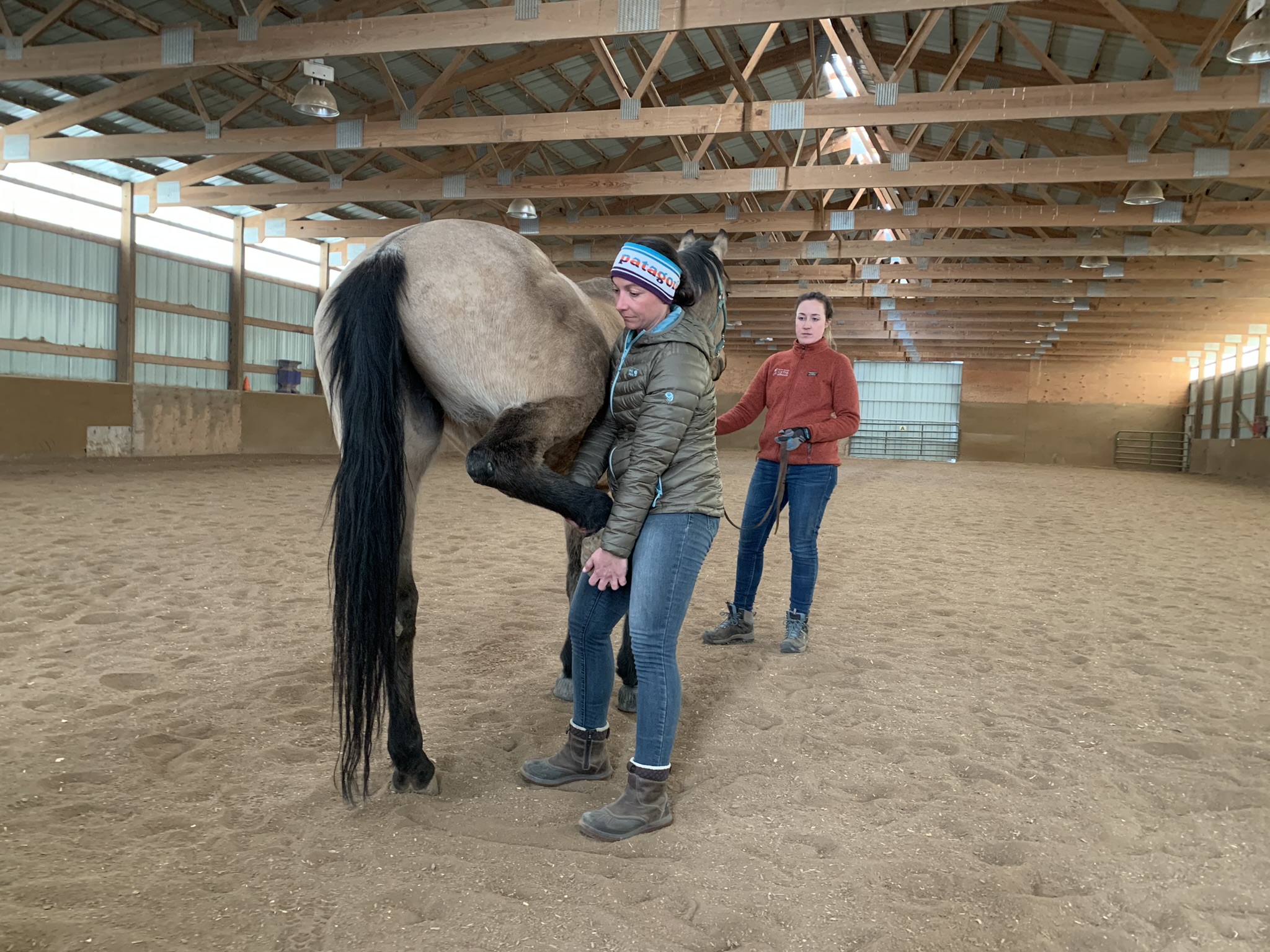Buying a horse is an exciting venture, but it comes with responsibilities, particularly regarding the animal's health and soundness. One of the most critical steps in this process is conducting a comprehensive pre-purchase exam. This evaluation helps ensure that the horse is fit for its intended purpose and can help prevent costly surprises down the road.
What Does a Comprehensive Equine Pre-Purchase Exam Entail?
A comprehensive equine pre-purchase exam is a detailed veterinary evaluation conducted to assess a horse's overall health, physical condition, and suitability for its intended use, whether for riding, competition, breeding, or other purposes. This essential step helps potential horse buyers make informed decisions by uncovering any underlying health issues, soundness concerns, or performance limitations that may not be immediately visible.
During this examination, a veterinarian evaluates the horse’s medical history, conducts a physical exam, and may recommend diagnostic tests such as radiographs (X-rays), ultrasound, or bloodwork. This thorough approach ensures that buyers have a clear understanding of the horse's current condition and potential long-term health needs. By investing in a pre-purchase exam, future horse owners can confidently determine whether the horse aligns with their goals and expectations.
This detailed assessment serves as a crucial tool for protecting the buyer’s investment and ensuring the horse is a suitable match for their specific needs and lifestyle.

Specific Tests and Evaluations in a Thorough Pre-Purchase Exam
A comprehensive equine pre-purchase exam involves a series of specific tests and evaluations designed to provide a clear picture of the horse's health, soundness, and suitability for its intended purpose. These assessments allow potential buyers to be fully informed before investing in a horse.
A complete pre-purchase exam typically includes:
- Physical Examination: Inspection of the horse's overall condition, conformation, and evidence of past injuries or abnormalities.
- Lameness Assessment: Observing the horse in motion on different terrains and during various gaits to identify any lameness. Evaluating a horse with a rider on during the exam can be helpful as some lamenesses do not become apparent until the weight of the rider is added.
- Flexion Tests: Assessing the horse's flexibility and potential discomfort in specific joints.
- Imaging: X-rays or ultrasound may be used to evaluate the bones and soft tissue, especially if an issue is detected during physical examination.
- Blood Tests: These may check for diseases (like Cushing's and EPM) or screen substances that could affect performance.
Variation in Pre-Purchase Exams Based on Intended Use
The extent of the pre-purchase exam may vary depending on the horse's intended use. For example:
- Show Jumping or Dressage Horses: May require more extensive evaluations of movement, flexibility, and underlying joint health.
- Trail Riding Horses: Focus may be on soundness for endurance and general health assessments.
Impact of Pre-Purchase Exam Findings on the Decision to Purchase
The findings from a pre-purchase exam can significantly impact a buyer's decision. If the exam reveals significant soundness issues or health concerns, the buyer has several options:
- Walk Away: Serious findings, such as chronic lameness or a degenerative condition, may lead the buyer to reconsider the purchase entirely.
- Negotiate the Price: Buyers might use the exam findings to renegotiate the price, particularly if the horse will require ongoing medical care or is limited in its intended use.
- Request Repairs or Remedies: In some cases, the seller may agree to address specific health concerns, such as dental work or hoof care, before completing the sale.
The pre-purchase exam empowers buyers with critical information, allowing them to make an informed decision that aligns with their needs and budget.
Key Signs That a Horse May Not Pass a Pre-Purchase Exam
While a veterinarian's evaluation is essential for uncovering hidden issues, buyers should remain vigilant for obvious red flags during the purchasing process.
Potential buyers should be aware of red flags such as:
- Noticeable lameness or difficulties in movement.
- Swelling or heat in joints.
- Abnormal posture or leaning to one side.
- Significant changes in behavior, indicating pain or discomfort (e.g. biting, kicking)
- History of recurring health issues.
Role of a Veterinarian in Advising During and After the Exam
A veterinarian plays a crucial role by providing an objective assessment of the horse's health. They can explain the significance of the findings, answer questions from potential buyers, and provide recommendations based on the horse's intended use. After the exam, they can guide the buyer regarding care, management, and potential treatment options if any issues arise.
Limitations of a Pre-Purchase Exam
While a pre-purchase exam is an essential precaution, it is not foolproof. Some conditions may not be detectable at the time of the exam, and soundness can change with workload or stress. Buyers should consider that routine veterinary care, training environment, and history also play significant roles in the horse's ongoing health.
Can a Horse That Has Failed a Pre-Purchase Exam Still Be Suitable for Some Activities?
Yes! A horse that does not pass a pre-purchase exam may still be suitable for less demanding activities, such as light trail riding or as a companion animal, depending on the nature of the findings.

The key is understanding the extent and implications of the findings in relation to the intended use. A veterinarian can provide critical insights into the horse’s condition, including whether any health or soundness issues are manageable through medical treatment, proper care, or adjustments in workload.
Potential buyers should consider:
- Activity Level: Horses with limitations may thrive in low-impact activities like leisurely trail rides or light pleasure riding.
- Management Requirements: Some conditions can be managed with specific diets, exercise routines, or medications, making the horse viable for specific roles.
- Temperament and Suitability: Even if a horse has physical limitations, its temperament and compatibility with the owner’s needs can still make it a valuable partner.
While failing a pre-purchase exam may indicate challenges, it doesn’t necessarily disqualify the horse from finding a suitable role. Careful evaluation of the horse’s health and abilities, alongside consultation with an experienced veterinarian, can help determine the best path forward.
Preparing for a Pre-Purchase Exam
Proper preparation for a pre-purchase exam allows a smoother process and permits potential horse owners to gather the information needed to make an informed decision. Here’s how to get ready for this critical step:
Gather Information
Collect as much background information about the horse as possible. This can include:
- Veterinary History: Request access to any prior medical records, including details of vaccinations, injuries, surgeries, or treatments.
- Imaging: If available, gather previous X-rays, ultrasounds, or other diagnostic images to provide a baseline for comparison.
- Training and Performance History: Document the horse’s training routine, level of competition, and any notable achievements or setbacks.
- Behavioral Insights: Understand the horse’s temperament, habits, and how it interacts with handlers and riders.
This information helps the veterinarian tailor the exam to the horse’s unique circumstances and provides a more comprehensive assessment.
Questions for the Veterinarian
Before the exam, prepare a list of questions to ensure you address any specific concerns. Consider asking:
- Targeted Areas of Concern: Based on the horse’s intended use, are there specific areas of health or soundness that require closer examination?
- Advanced Testing: Would diagnostic tools such as X-rays, bloodwork, or ultrasounds add value to the exam?
- Follow-Up Care: If issues are identified, what kind of management, treatment, or follow-up care might the horse require to remain healthy and functional?
By discussing these points in advance, you can align your expectations with the veterinarian’s approach and make the most of the pre-purchase exam.
Final Thoughts
A pre-purchase exam is invaluable for anyone looking to buy a horse. It provides vital information about the horse's health and performance capabilities, assisting buyers in making informed decisions. Working with experienced veterinarians, buyers can ensure they choose a horse that will provide years of companionship and joy.
If you have questions and you'd like to reach out to us, you can call us directly at (970) 368-3125, or you can email us at [email protected]. Don't forget to follow us on social media Facebook, Instagram.
